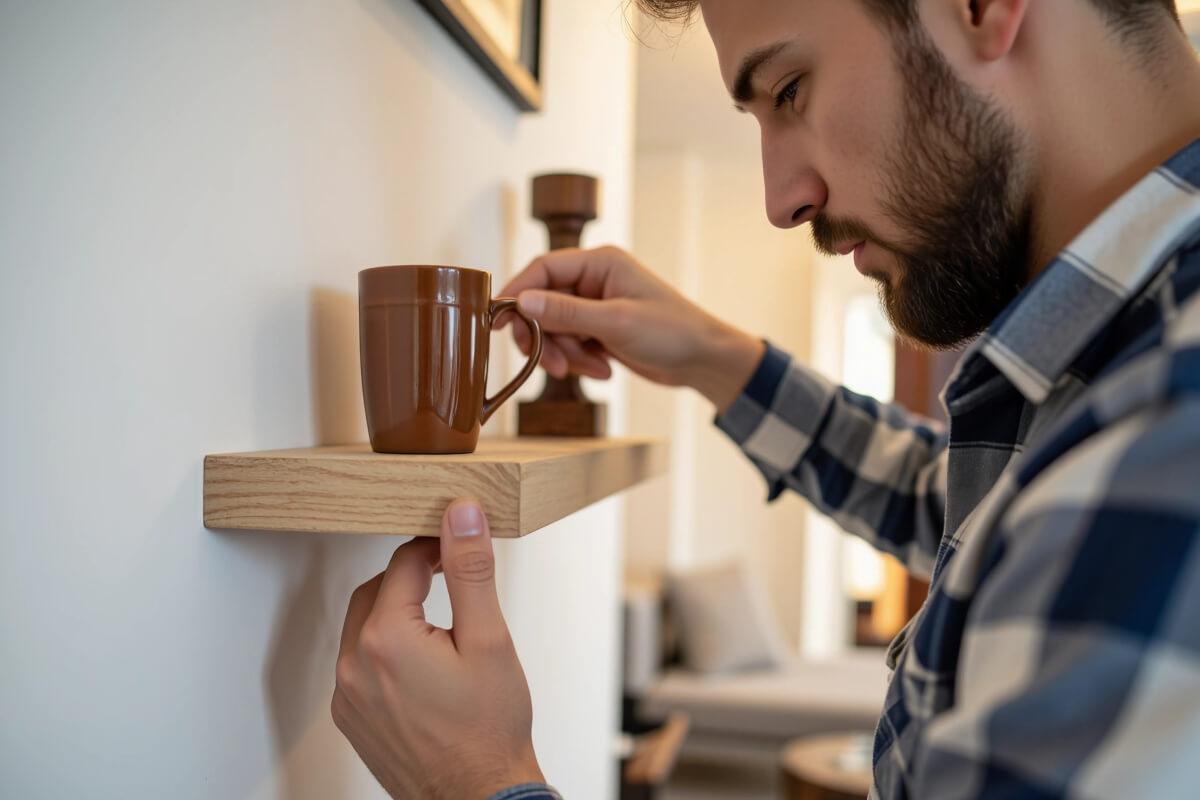Have you ever had the urge to completely revamp your apartment? No, we're not talking about changing out throw pillows or putting a welcome mat at your door. We’re talking about major changes like painting the walls, installing new light fixtures, or even knocking down a wall to open your floor plan.
Making these changes to a home is simple when you own it. But what about if you’re renting? Can you make property improvements with your landlord’s approval? If so, how should you approach making those requests? We’ll answer all these questions and more in this guide to getting apartment cosmetic changes approved. Let’s get started!
Key Takeaways:
- Leases often include clauses about alterations—look for terms like "no alterations," "landlord approval required," or limits on specific upgrades. Cosmetic changes like painting or swapping hardware may be permitted, while structural changes like removing walls usually aren’t.
- Landlords are more likely to approve changes when tenants submit detailed, written requests that outline proposed upgrades, include supporting photos, and maintain a respectful tone.
- Documenting the apartment’s original condition with photos before making changes is crucial to protect your security deposit and resolve any future disputes.
- If requests are denied, renters can still personalize their space with non-permanent upgrades like peel-and-stick tiles, removable wallpaper, freestanding shelving, and plug-in lighting.
- Renter-friendly decor options span every room—from tension rod curtains and contact paper cabinets to freestanding storage and smart bulbs—all designed to upgrade your space without risking lease violations.

Understand the Limits and Lease Review
Before you start picking out paint swatches or browsing backsplash options, you must review your lease agreement. Specifically, you should look for any alteration/renovation clauses outlining rules or restrictions around property improvements. Once you’ve identified this section, use the tips below to plan your next move:
Common lease terms to look for
It’s easier to read a lease when you know what to look for. In the case of property alterations, keep an eye out for the following terms, phrases, or explanations to determine whether cosmetic changes are an option:
- No alterations: Some landlords prohibit any and all updates to unit interiors. If this is the case, you will not be able to make any changes without risking eviction.
- Landlord approval required: Other landlords may allow for modifications as long as they approve them first. In this case, you should submit a written proposal outlining your proposed changes and wait for written permission before beginning work.
- Limiting specific types of alterations: Occasionally, lease agreements may allow for some types of improvements while prohibiting others. For example, installation of wall-mounted shelving may be okay while painting or wallpapering is off-limits.
Though leases vary, here is an example of an alterations lease clause to give you an idea of what to expect:
Tenant must obtain the Landlord's prior written consent for any alterations, additions, or improvements to the premises. This consent will not be unreasonably withheld.
However, the Tenant may, at their own cost and in a good, workmanlike manner, make minor alterations, additions, or improvements without the Landlord's consent. This includes installing or modifying partitions, shelves, bins, machinery, and trade fixtures, as deemed advisable by the Tenant. Such changes must not alter the basic character of the Building or Premises, overload or damage them, and must comply with all applicable governmental laws, ordinances, regulations, and other requirements.
What “cosmetic vs. structural” means
Your lease agreement might specifically permit “cosmetic” changes and not “structural” ones. A cosmetic renovation is generally something that any average renter could do themselves, like painting walls, replacing doorknobs, or grouting bathroom tiles. Structural renovations, on the other hand, involve altering the home’s layout or foundation. This could be something like installing windows, tearing down walls, or merging rooms.
Generally, cosmetic changes are less regulated by landlords, while structural changes will usually require formal approval. So, if you’re trying to do a complete kitchen remodel, you may have to hold out until you’re a homeowner yourself. However, minor DIY projects will typically be permitted and even encouraged by landlords.
Document the starting condition
Documentation is a vital part of the home renovation process. Even if it’s a simple change like switching out doorknobs or cabinet hardware, make sure to photograph the initial condition before getting started. This will be crucial in case any disputes arise with your landlord regarding damage or changes made to the property.

How to Approach Your Landlord (Negotiation Steps)
If your lease permits property changes, your next step is to approach your landlord. Most landlords will permit minor alterations. However, when it comes to bigger asks, it might require some negotiation. To maintain your relationship and avoid causing waves, here are some tips on how to approach this conversation:
When and how to ask
It’s best to keep things in writing when interacting with your landlord. That way, if disputes arise down the line, you’ll have evidence of your conversation. Even if you have a casual rapport with your landlord, it’s still important to put things in writing for clarity and protection.
Your written request should maintain a level of professionalism, clarity, and directness. Try to avoid using accusatory language and instead focus on your needs and desires as a tenant. As far as timing goes, it’s best to reach out to your landlord during working hours. This shows respect for their time and allows them to give your request proper attention.
What your request letter should include
Your letter should be clear, to-the-point, and descriptive. List and describe the changes you’d like to make and why you’d like to make them and provide a timeline for when you’d like them to be completed. It’s also important to include any supporting documents or evidence, such as pictures or invoices, that may help justify your request.
To get you started, here’s an example of a property change request to follow:
Dear [Landlord],
I am writing to request a few changes to be made to my rental property, located at [Address]. After living here for some time now, I have noticed a few areas that require improvement and would greatly appreciate your attention towards addressing them. I have outlined my requests below:
- [Bulleted list of changes with descriptions and accompanying photographs]
I understand that these changes may require some time and resources, but I believe they will greatly benefit the overall appearance and functionality of the property.
Thank you for taking the time to review my requests. Please feel free to reach out to me if you need any additional information or clarification regarding the suggested changes. I look forward to hearing back from you soon.
Sincerely, [Your Name]
Tips if your landlord declines
If your landlord denies your alteration request, don’t stress! There are certain steps and compromises you can make to still scratch that remodeling itch. If permanent options are off the table, consider some temporary alternatives. For example, if you had your heart set on painting the walls bright orange, find a removable wallpaper with a similar look. Or, if you want to tear a wall down for a more open layout, consider adding a large mirror to create the illusion of more space.
At the end of the day, it’s important to respect your landlord’s decision. If you want to try to negotiate, ask them why they denied your request and see if you can address those concerns in a different way. You may not be able to make all the changes you want, but try to find a middle ground that both you and your landlord are happy with.

Décor Categories and Renter-Friendly Options
While overhauling your entire floor plan might not be in the cards, there are several other home aspects you can change without causing major damage or violating your lease. Below, we’ve outlined some renter-friendly tips and resources for revamping key parts of your home:
Backsplashes and wall coverings
- Peel-and-stick tiles: Easily add a pop of color or texture to your kitchen or bathroom without damaging existing surfaces.
- Temporary wallpaper: Transform a plain wall with patterns or designs that remove cleanly when you move out.
- Removable contact paper: Great for adding visual interest to small areas or furniture.
- Fabric wall hangings or tapestries: A simple, non-damaging way to add personality and cover large wall spaces.
Shelving and storage solutions
- Freestanding shelving units: Provide extra storage without drilling into walls.
- Over-the-door organizers: Utilize vertical space in closets and bathrooms.
- Tension rod shelves: Create temporary shelving inside cabinets or in small alcoves.
- Adhesive hooks and floating shelves: For lightweight items, consider adhesive options that won't damage walls.
Lighting and fixtures
- Plug-in pendant lights: Add stylish overhead lighting without needing electrical work.
- Floor and table lamps: Easily change the ambiance and brightness of a room.
- Smart light bulbs: Customize colors and brightness with existing fixtures.
- Temporary light fixture upgrades: Sometimes, landlords allow minor changes like swapping out a dated light shade if you store the original. Always ask first!
Cabinet and hardware upgrades
- Removable drawer pulls and cabinet knobs: Easily update the look of your kitchen or bathroom. Store the originals to swap back when you leave.
- Contact paper for cabinet doors: Cover outdated cabinet fronts with a fresh, temporary finish.
- Magnetic cabinet organizers: Add storage inside cabinet doors without drilling.
Flooring and rugs
- Area rugs: Define spaces, add warmth, and cover up less-than-ideal flooring.
- Peel-and-stick vinyl tiles: For small areas like bathrooms or entryways, these can be a temporary flooring solution.
Window treatments and privacy
- Tension rod curtains: Install curtains without drilling holes around windows.
- Removable privacy film: Provides privacy and can add decorative elements to windows.
- Blinds or shades: While often standard, you might be able to swap out old ones if you agree to reinstall the originals upon moving. Check your lease before installing!
Ace Apartment Living with Apartments.com
Need help understanding your lease agreement? Or redecorating your apartment? Find tips for acing apartment living right here on Apartments.com! Whether you’re considering making big home renovations or just some simple DIY projects, we’ve got you covered on all fronts! Check out our blog for more resources on navigating the world of apartment living.
This article was originally published on June 8, 2017, by Lauren Ross.
FAQs
Can peel-and-stick tiles damage painted drywall?
While most peel-and-stick tiles are designed for easy removal, damage can occur depending on the quality of the paint or how long they've been applied. Always test a small, inconspicuous area first to ensure they won't pull off paint upon removal.
What if my lease prohibits any changes?
If your lease explicitly prohibits any changes, it's crucial to respect these terms. Making unauthorized modifications could lead to lease violations, forfeiture of your security deposit, or even eviction.
How many holes are acceptable in a rental property?
The number of acceptable holes typically depends on your lease agreement and your landlord's discretion. Some leases allow a reasonable amount of small nail holes for hanging decor, while others may prohibit them entirely or require professional repair upon moving out. Always clarify with your landlord to avoid unexpected charges.
Can these changes affect my security deposit?
Yes, any unauthorized or poorly executed changes can definitely affect your security deposit. Your landlord may deduct costs for repairs, patching, or repainting required to restore the property to its original condition. Always get written approval for any modifications to protect your deposit.






